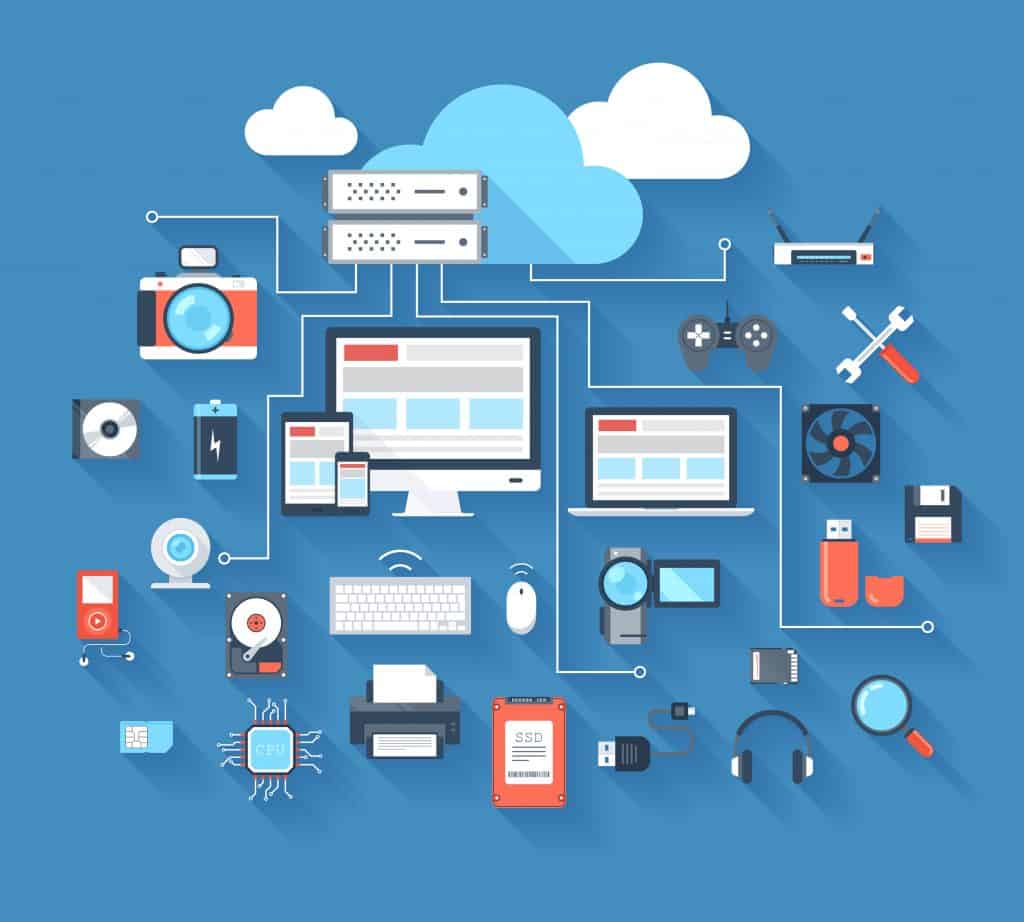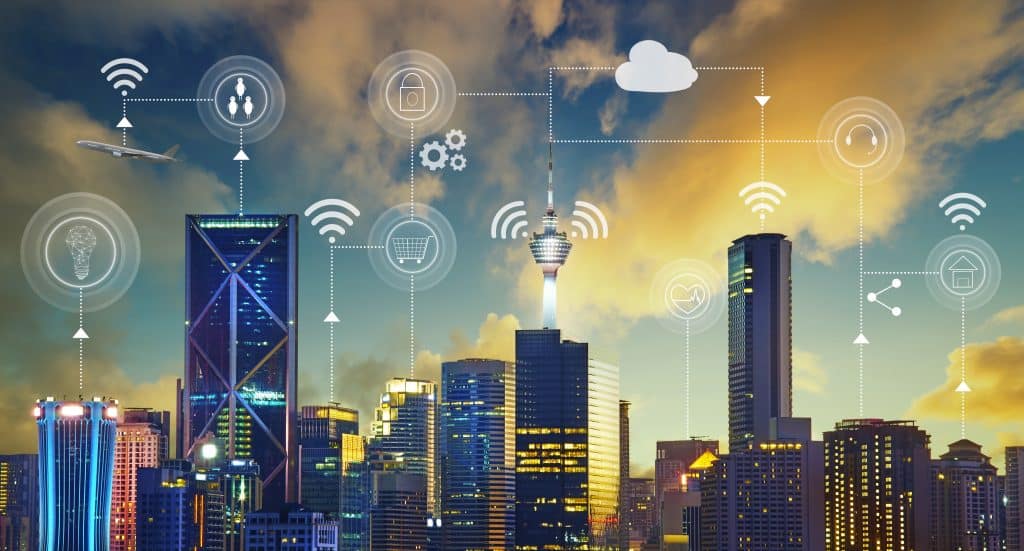Edge computing is what enables the internet of things. It’s what makes it possible for your smart thermostat to know what temperature you want, or for your car to tell you when it needs an oil change.
The future of edge computing will be a world where everything from traffic lights to refrigerators can communicate with each other and make our lives easier. We’re already seeing this in some places – like China, which has deployed over 100 million IoT devices in just three years!

What Is Edge Computing?
Edge computing is a term used to describe the use of technology to process and act on data as close to the source of that data as possible. This can be done for a variety of reasons, such as to improve performance, reduce network traffic, or enable real-time actions.
How Is Edge Computing Different From Traditional Cloud Computing?

In traditional cloud computing, most data and processing is done in the cloud datacenters.
Edge computing is different from traditional cloud computing in a few ways. First, edge computing brings the processing power closer to the data, which reduces latency and improves performance. Second, edge computing enables more efficient use of resources since the data doesn’t have to be sent to a remote data center. And third, edge computing can help address security and privacy concerns since the data is processed closer to where it is generated.
What Are The Benefits Of Edge Computing?
One of the key benefits of edge computing is that it can help to improve performance. When data is processed close to the source, it can be done more quickly and efficiently. This can be especially important for applications that require fast response times, such as those used in industrial or medical settings.
Edge computing can also help to reduce network traffic. By processing data at the edge, we can avoid sending all of it to a central location for processing. This can be helpful when there is a lot of data to be processed, or when the data is time-sensitive.
Real-time actions are another important benefit of edge computing. By processing data at the edge, we can often take action on that data immediately, without having to wait for it to be processed by a central system. This can be useful for things like controlling traffic or managing manufacturing processes.
Who Benefits From Edge Computing?
There are many different types of businesses and organizations that can benefit from edge computing.
Some of the most obvious beneficiaries are companies that have a large number of IoT devices and large amounts of enterprise-generated data. These businesses can use edge computing to process all the data those devices generate, which can help them to improve performance and efficiency.
Another group that can benefit from an edge computing model is companies that have a lot of data to process. By moving that data processing to the edge, these businesses can avoid having to send all of their data to a central location. This can speed up the processing time, and also reduce the amount of bandwidth that is needed.
Consumers will benefit from edge computing by having smarter devices that can communicate with each other and make our lives easier. For example, imagine if your car could tell your home thermostat what the temperature should be when you get home.
Finally, companies that need to take immediate action on data can also benefit from edge computing. This includes things like traffic control, manufacturing, and healthcare.
How Does Edge Computing Work?
There are a number of different ways that edge computing can be implemented. One common approach is to use a network of micro-data centers located close to the sources of data. These data centers can then process the data and deliver the results back to the central system. These edge servers are responsible for computation and data storage.
A second approach is to charge the connected devices with processing data locally. This distributed computing model is good for situations where the processors can be powerful enough for processing most of the data, think self-driving cars.
A third approach is having a hybrid cloud strategy, where some data processing is done on the cloud edge but more comprehensive data analysis is at a central data center or micro data centers.
How Does Edge Computing Reduce Latency?
Latency is the delay between when you send a request and when you receive a response. Edge reduces latency by routing traffic through its global network of data centers, which are located in strategic locations around the world. This means that your requests are handled by the nearest Edge data center, which reduces the amount of time it takes for data to travel between you and the server.
Edge computing is also caching static content close to end-users in order to serve it as quickly as possible. This eliminates the need to download content from distant servers, which can further reduce latency. Overall, edge computing’s global network and caching capabilities combine to provide a fast, responsive experience for all users and systems, regardless of their location.
What Enables Edge Computing Now?
There are a number of technologies that are needed to enable edge computing. These include 5G networks, micro-data centers, and cloud services.
5G Networks
5G networks are needed to provide the high bandwidth and low latency required for edge computing. 5G networks are expected to be up to 100 times faster than current 4G networks, and they will also have much lower latency. This makes them ideal for transmitting data from IoT devices to edge computers.
Micro-Data Centers
Micro-data centers are needed to provide the processing power required for edge computing. These data centers can be located close to the sources of data, which helps to reduce latency.
Cloud Computing Services
Cloud services are needed to provide the storage and compute power required for edge computing. Cloud services can be hosted in nearby data centers, or they can be hosted in the cloud. This allows businesses to access the processing power they need without having to set up their own infrastructure.
What Types Of Applications Are Suitable For Edge Computing?
Not all applications are suitable for edge computing.
Applications that require real-time processing, low latency, or high bandwidth are good candidates for edge computing. In addition, applications that generate a lot of data or require frequent updates are well-suited for edge deployment.
Applications that are not suitable for edge computing include those that do not require real-time processing, those that can tolerate higher latency, and those that can be handled by centralized data centers.
It is important to note that there is no one-size-fits-all answer when it comes to choosing applications for edge computing. Each organization’s needs are different, and the best way to determine which applications are suitable for edge deployment is to perform a careful analysis of your specific requirements.
What Are Some Applications Of Edge Computing?

Some examples of edge computing solutions are:
- Smart Cities – where traffic lights, parking meters, and other city infrastructure can be connected and managed centrally
- Industrial IoT – where machines can be monitored and controlled in near-real-time
- Vehicle Automation – where cars can communicate with each other and the infrastructure to prevent accidents and traffic congestion
- Healthcare – where medical devices can process and react in near time (think pacemakers) and send data directly to doctors or hospitals for real-time analysis
What Challenges Does Edge Computing Present?
Edge computing brings a lot of benefits, but it also presents some unique challenges. One of the biggest challenges is that it can be difficult to manage all of the data that’s being processed at the edge. There are also security concerns to consider since edge devices are often exposed to more threats than traditional data center environments.
Another challenge is ensuring that data is processed in a timely manner and that decisions are made in near-real-time. This can be a challenge when dealing with large volumes of data or when network conditions are not ideal. And finally, there’s the question of who should be responsible for managing and securing edge computing infrastructure – the enterprise, the service provider, or both?
What Drawbacks Are There To Edge Computing?
There are a few drawbacks to edge computing.
First, it can be more expensive to set up and maintain edge networks than centralized data centers.
Second, it can be harder to manage, keep track of, and protect data when it’s spread out across many different devices and locations.
Third, edge computing may not be suitable for all types of applications or workloads.
Finally, there can be different types of security risks than with cloud computing associated with distributing data out to the edge where it is harder to ensure system updates and isolated attacks may become more common.
What Security Risks Are Associated With Edge Computing?

Due to the distributed nature of edge computing, it can be more difficult to secure data and systems than with traditional cloud computing. This is because data is processed and stored at many different locations, making it difficult to track and manage.
In addition, edge devices are often less secure than traditional servers, making them more vulnerable to attack. Data is sent over the public cloud, exposing it to more attacks (but this is the same issue with a centralized data center).
Organizations need to take steps to protect their data and systems by implementing strong security measures. This includes using firewalls, antivirus software, and other security tools to prevent unauthorized access. In addition, it is important to keep all devices up-to-date with the latest security patches.
By taking these precautions, you can help to protect your data and systems from attack.
What Does The Future Of Edge Computing Look Like?
The future of edge computing is bright. With the growth of the IoT, more and more businesses and organizations will be looking for ways to process data at the edge. 5G networks and micro-data centers will help to make this possible, and cloud services will provide the necessary computing power and storage.
More and more cloud providers are starting to offer edge servers and an edge data center.
This combination of technologies will enable businesses to take advantage of edge computing in a variety of different ways.
Wrapping Up
Edge computing is the process of processing data and applications at the edge of a network, close to or within end-user devices. This contrasts with traditional centralized computing models in which data is processed and stored in a limited number of data centers.
Whether you’re running an application that requires real-time processing, low latency or high bandwidth–or if your organization generates lots of data or needs frequent updates–you should consider using one of these three types: fog computing, wireless sensor networks (WSNs), and content delivery networks (CDNs).
As always, it’s important to take steps to protect your information from attack by implementing strong security measures such as firewalls and antivirus software on all devices.
I hope you found this overview useful. And check out the FAQ below for additional, related questions.
FAQ
What Is An Edge Computing Strategy?
Edge computing is a strategy for optimizing data management and analytics by bringing processing power closer to the sources of data. This can improve performance and reduce the load on centralized data management systems. Edge computing can also improve security by reducing the amount of sensitive data that travels through potentially vulnerable networks.
There are many different types of edge computing, each with its own advantages and disadvantages. Some common edge computing strategies include fog computing, content delivery networks (CDNs), and wireless sensor networks. Each has its own specific applications and use cases.
Choosing the right edge computing strategy for your organization requires understanding your specific needs and requirements. There is no one-size-fits-all answer, but with careful planning, you can make edge computing work for your business.
What Is An Edge Site?
An edge site is a website that sits on the edge of a network and provides content and services to users on that network. Edge sites are often used to provide content that is not available through the main website or to reduce the load on the main site.
Edge sites can also be used to collect data from users or to provide services that are not available through the main site. For example, Facebook has a number of edge sites that are used to collect data from users who are not logged in to Facebook. These edge sites include things like Facebook Login and Facebook Share Buttons.
What Is An Edge Computing Platform?
Edge computing platforms are used to manage and process data closer to the edge of the network, as opposed to at a central data center. This helps improve performance and efficiency while reducing costs.
Edge computing platforms can be used for a variety of applications, including:
- Managing and processing data from IoT devices
- Processing video or image data for security or analytics purposes
- Storing or buffering data locally for faster access or reduced bandwidth requirements
- Providing distributed cloud services
Who Is Building Edge Datacenters?
There are a number of companies building edge data centers, but some of the most notable include Amazon, Facebook, Google, and Microsoft.
These companies are all racing to build out their edge networks in order to stay ahead of the competition and provide the best possible user experience for their customers. They’re also working on developing new technologies that will help them handle the increased demand for data storage and processing.
Are Phones Edge Devices?
Yes, a phone is an edge computing device. In fact, any device that can run an application–a phone, a laptop, a tablet, etc.–is an edge computing device. A phone is a pretty good example of mobile edge computing.
Edge computing describes the distributed processing of data and applications at the edge of the network, close to or within end-user devices. This contrasts with traditional centralized computing models in which data is processed and stored in a limited number of data centers.
